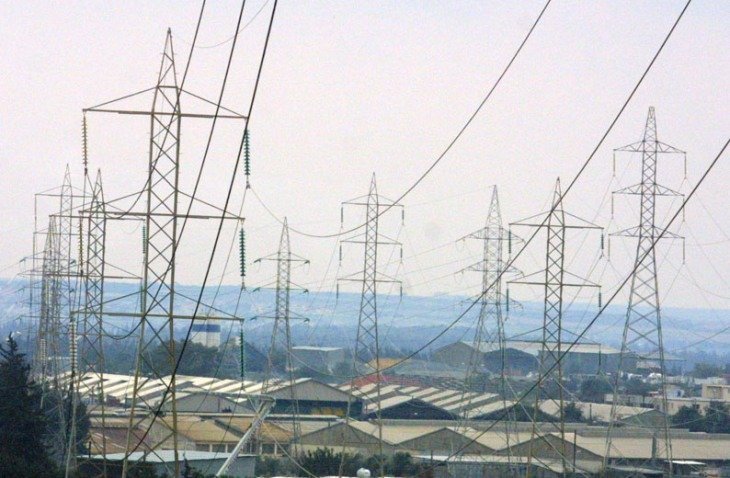Cyprus must progress from lip-service to serious action if Cypriot consumers are ever to see serious reductions in their inexcusably high energy costs.
Household electricity prices shot-up by 38 per cent in August, in comparison with a year ago. Christina Papadopoulou, press officer at Electricity Authority Cyprus (EAC), explained last week that prices have been rising since March to reflect the increase in fuel and emission allowance costs, as well as the abolition of the 10 per cent discount on EAC accounts – due to the pandemic – that lasted from April to September 2020.
Expressed in terms of purchasing power, this makes electricity in Cyprus one of the most expensive in Europe – in 2019 it was close to 50 per cent higher than in Greece.
Indeed, the Brent crude oil price has risen 58 per cent since the end of August 2020, while the price of EU emission allowances (EUA) went up by over 210 per cent.
But it is the latter that will haunt future electricity prices in Cyprus unless it is addressed seriously. While in 2019 EUA costs comprised 8,6 per cent of EAC total costs, by the end of 2021 this share will rise to a staggering 15 per cent and will carry on increasing thereafter. And all this because Cyprus is one of Europe’s laggards when it comes to implementing renewable energy. Cypriot consumers are now paying the penalty following years of neglect.
Last year Cyprus produced about 11 per cent of its electricity from renewables, while the EU average was 20 per cent, with Greece near the top with 27 per cent. Greeks also pay lower taxes on their electricity, 23 per cent in comparison to Cyprus’ 30 per cent. It is ironic that this tax is also applied to the EUA cost.
Changes to EU’s emission trading system (ETS)
On 14 July the European Commission (EC) presented its ‘Fit-for-55’ legislative package. This proposes stepping-up EU’s ETS as the main instrument the EC plans to use to achieve a 55 per cent cut in emissions by 2030 – in comparison with 1990 – and net-zero emissions by 2050.
ETS operates according to a ‘cap-and-trade’ principle. There is a fixed cap within which European plant operators, such as EAC, receive or purchase EUAs. Free allowances were abolished after 2019. Each year the cap is reduced such that overall emissions decline in line with EU’s targets. Currently the annual reduction is 2.2 per cent, but the new package would almost double this to 4.2 per cent from 2024. Companies face a fine if they exceed their emission allowances, fixed at €100 per excess tonne.
So far, the EU ETS applies to power generation and energy-intensive industries, such as cement production, covering 40 per cent of EU’s emissions. The new package proposes to extend ETS to include transport, buildings and the maritime sector. In addition, energy efficiency targets will be increased and be made legally-binding.
These changes would have far-reaching implications and can be achieved only through a massive increase in carbon-free generation. In terms of renewables this would mean an increase to 40 per cent of final energy consumption by 2030 instead of 32 per cent targeted now. Cyprus’ current target is far lower, at 23 per cent of gross final energy consumption and will almost certainly have to be revised significantly upwards.
The same applies to Cyprus’ emissions reduction target. It is currently 24 per cent – in comparison to 2005 – but Cyprus says in can achieve only 20.9 per cent reduction in emissions – presumably reflecting its low renewables ambition. Given the rising price of EUAs, this will have to be increased significantly if emission-related costs are not to rise even more.
EU’s EUA price was about €25/tonne CO2 in 2019, but it is now over €60/tonne and is expected to carry on rising and exceed €100/tonne by 2030. By then – assuming that nothing else changes – in comparison with 2019 levels EUAs would comprise 27 per cent of EAC’s costs and would require a 20 per cent increase in the electricity price to pay for this. But with the proposed 4.2 per cent reduction in the emissions cap, the situation would become far more serious.
What needs to be done
The introduction of natural gas in power generation – now expected in 2023 – would help reduce emissions roughly by 25 per cent, albeit at a cost and at the expense of ever developing Cyprus’ own gasfields. But its benefits will largely be eroded soon after it becomes available because of EU’s revised climate change targets, methane leakage (associated with LNG import terminals), the substantially faster reduction in the emissions cap – almost 2.5 times faster than the 2020 rate – and the rapid increase in EUA prices. In addition, as the share of renewables increases, less gas will be needed for power generation and inevitably the unit cost of gas will rise.
The answer to high electricity prices lies in a substantially more ambitious and pro-active implementation of renewable energy, at least matching EU’s proposed target of 40 per cent of final energy by 2030. This should be embodied in an integrated long-term energy plan. Not only these will help reduce electricity prices, but will also reduce energy imports and dependence on others.
On August 31, the Minister of Energy outlined a number of measures to aid transition to green energy and contain the increases in the price of electricity. Whilst these provide a start and are helpful, they do not go far enough and will take substantial time to implement. In addition, they do not constitute a coherent programme and some of the key proposals may not even see the light of day.
Without a massive increase in renewables the emission penalties from Europe will continue and the electricity price will not come down.
In addition to what the Minister outlined, what Cyprus urgently needs is a wholesale change in direction, not just small steps.
- Target to achieve 40 per cent renewable contribution to final energy by 2030, with not less than 50 per cent in electricity, with a matching cut in emissions – starting now;
- Implement competitive bidding based on international auctions for combined solutions to include renewables + storage (this is now a widely-applied competitive option);
- Upgrade and modernise Cyprus’ ageing and outdated electricity grid so that it can accommodate a higher proportion of renewables;
- Complete energy market reforms/unbundling by 2022, including deregulation of the energy and electricity sectors, facilitating the wider deployment of renewables;
- Simplify procedures to facilitate ambitious deployment of renewables at a much higher scale.







Click here to change your cookie preferences